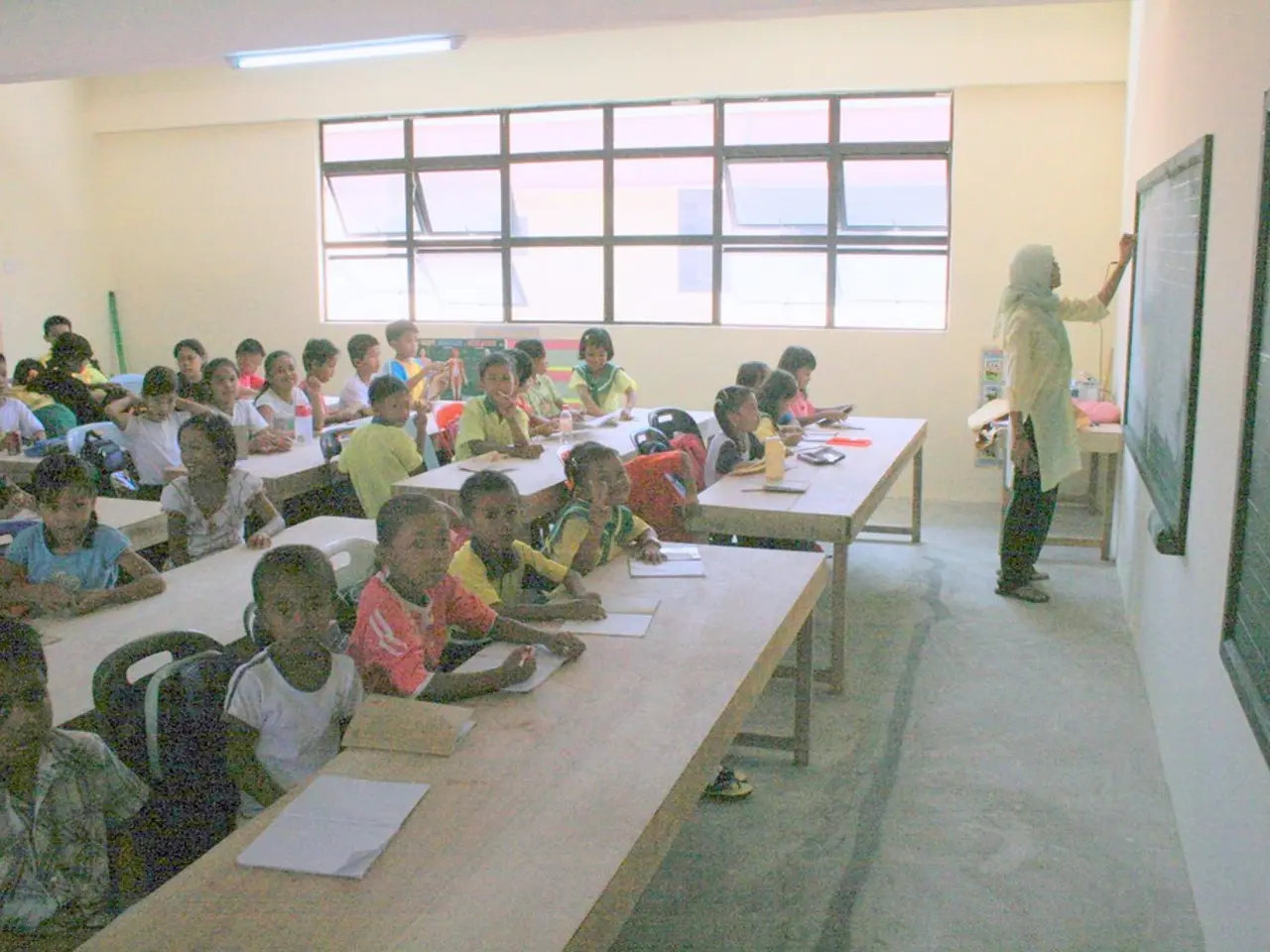Enhance Your Business Efficiency: Unleash Productivity Through Immersive Learning
Immersive training technologies, such as Augmented Reality (AR), Virtual Reality (VR), and Mixed Reality (MR), are revolutionising the way businesses educate their employees. These technologies provide hands-on skills practice, safe simulations of complex or hazardous tasks, and deeper, more effective learning through experiential methods.
In the aviation industry, virtual education programs are being used to teach emergency responses for cabin crew and cockpit familiarization for pilots. Notable examples include KLM, which has developed and implemented such programs for both cabin crew and pilots. Similarly, the aviation sector is also embracing immersive training, although specific examples are not widely available.
The manufacturing and industrial automation sectors are leveraging AR to assist workers during machine operation and maintenance. Digital overlays provide on-the-job guidance, bridging skills gaps and supporting an aging workforce. DHL, for instance, is using VR to improve the safety knowledge of warehouse workers, replacing a written training program with a game-like VR experience.
Businesses, particularly in the corporate sector, are using immersive learning to train employees in soft skills like leadership through role-play simulations, as well as technical skills training for procedural and equipment use. Business schools are incorporating VR and MR to immerse students in high-stakes business scenarios, enhancing critical thinking and emotional engagement.
Cedars Sinai Medical Center in California used VR simulations for training doctors on new pandemic-related medical procedures. Walmart has invested in over 17K Oculus Go headsets for training over 1 million employees in cashier operations. Ford is using an internal VR training tool to educate technicians working with the Mustang Mach-E.
Immersive training apps can reduce training time by an estimated 40%, make "hands-on" learning safer, eliminate training supply needs, be accessed remotely, improve retention of knowledge and skills, boost worker engagement, and provide measurable outcomes for large-scale and remote training.
Virtual reality allows users to see a fully virtual world, using a headset like the Oculus Rift, HTC Vive, Samsung Gear, or Playstation VR. ATT has designed a VR training simulator for jet engine assembly for technicians. Mixed reality merges real-world settings with 3D models and animation, using devices that support Windows Mixed Reality, such as Hololens (1&2) and headsets from HP and Acer. Lockheed Martin is using the Hololens mixed reality platform to improve the development process of the Orion spacecraft.
Businesses can overcome the uncertainty of creating an AR/VR/MR training solution by hiring needed specialists, working with a development partner, or partnering with a reliable development partner like our website. Our team is ready to jump into development of an AR/VR/MR training solution with years of immersive development experience.
Immersive training technologies are seen as a vital tool across industries focused on skill development, safety, compliance, and preparing employees for complex, real-world challenges. These technologies are transforming the landscape of employee education, offering a more engaging, effective, and efficient way to learn.
- Corporate businesses are using immersive learning to custom develop software simulations for educational and self-development purposes.
- Virtual Reality (VR) is being utilized in the finance industry for training employees on complex financial calculations and strategic decisions.
- In the technology industry, game-like VR experiences are used for learning and simulation of various software applications and coding.
- The education-and-self-development industry is embracing AR technology, using mobile apps to provide augmented learning experiences in everyday life.
- The use of immersive training technologies in the defense industry aids in the development and understanding of advanced weapons systems through simulated combat scenarios.
- Silicon Valley companies are investing in Virtual Reality solutions to create immersive training platforms for employees, enhancing productivity and proficiency.
- The medical sector is leveraging VR and AR to develop more realistic and cost-effective surgical training solutions, reducing the need for animal testing.
- Immersive training technologies are revolutionizing the hospitality industry, providing virtual tour guides and simulations for customer service training.
- The retail industry is using VR to create immersive shopping experiences and train employees on new product launches and store layout strategies.
- The sports industry is adopting AR and VR technology to improve the training of athletes by creating realistic simulations of game scenarios and providing real-time feedback on performances.




